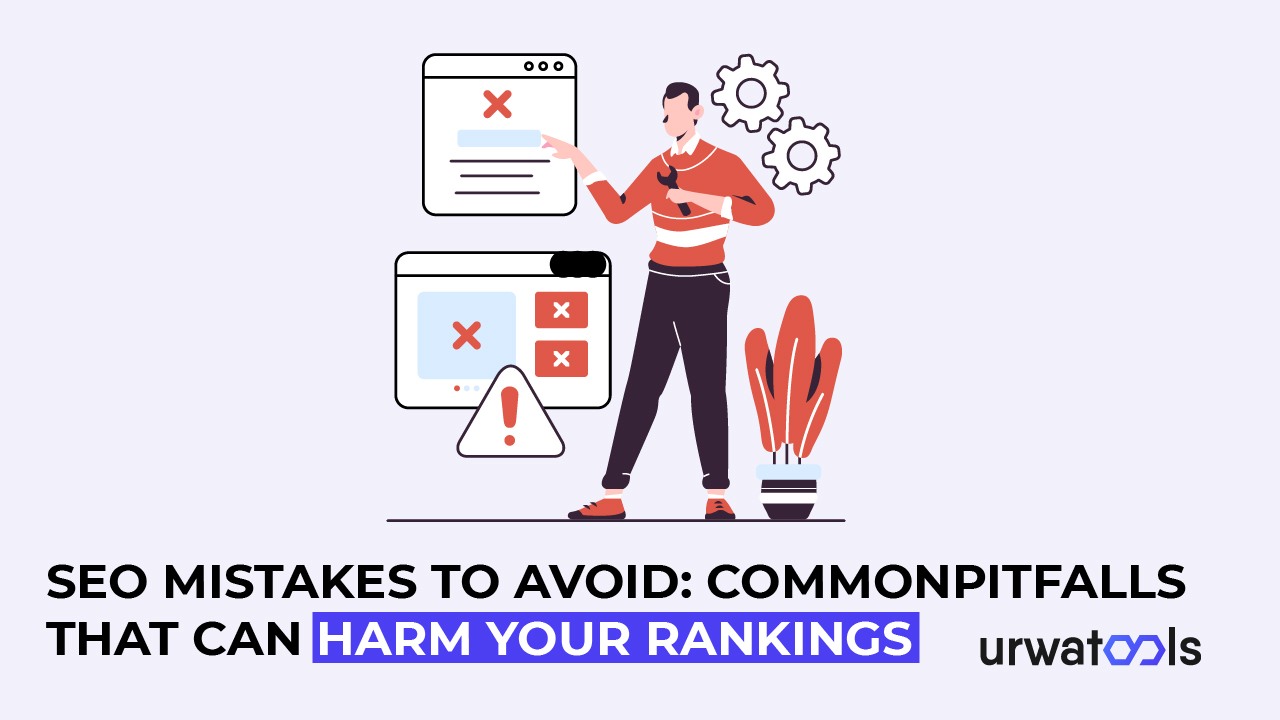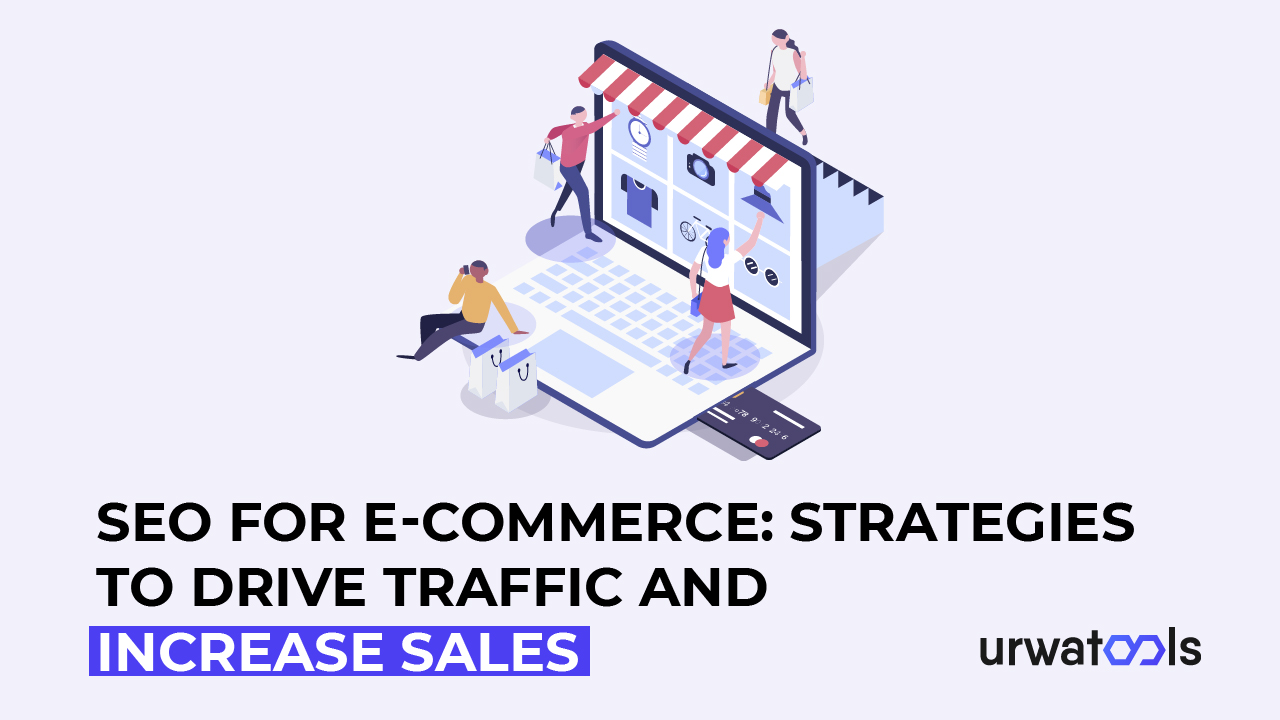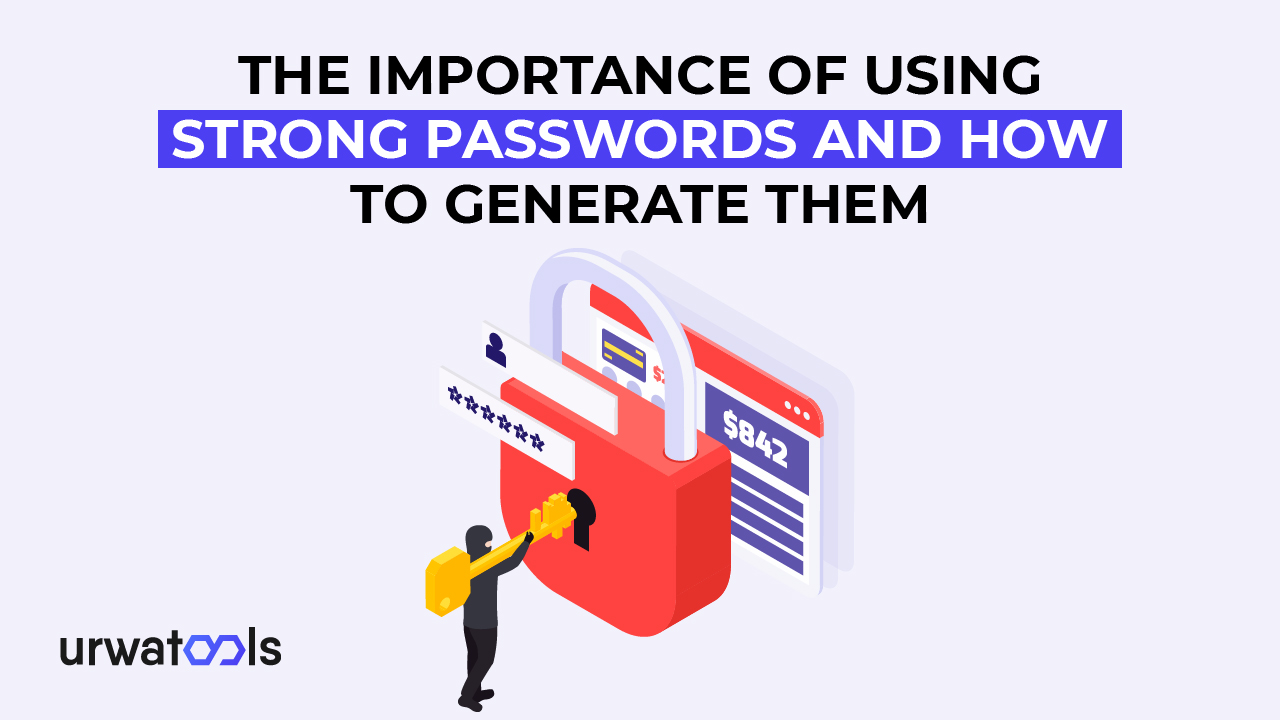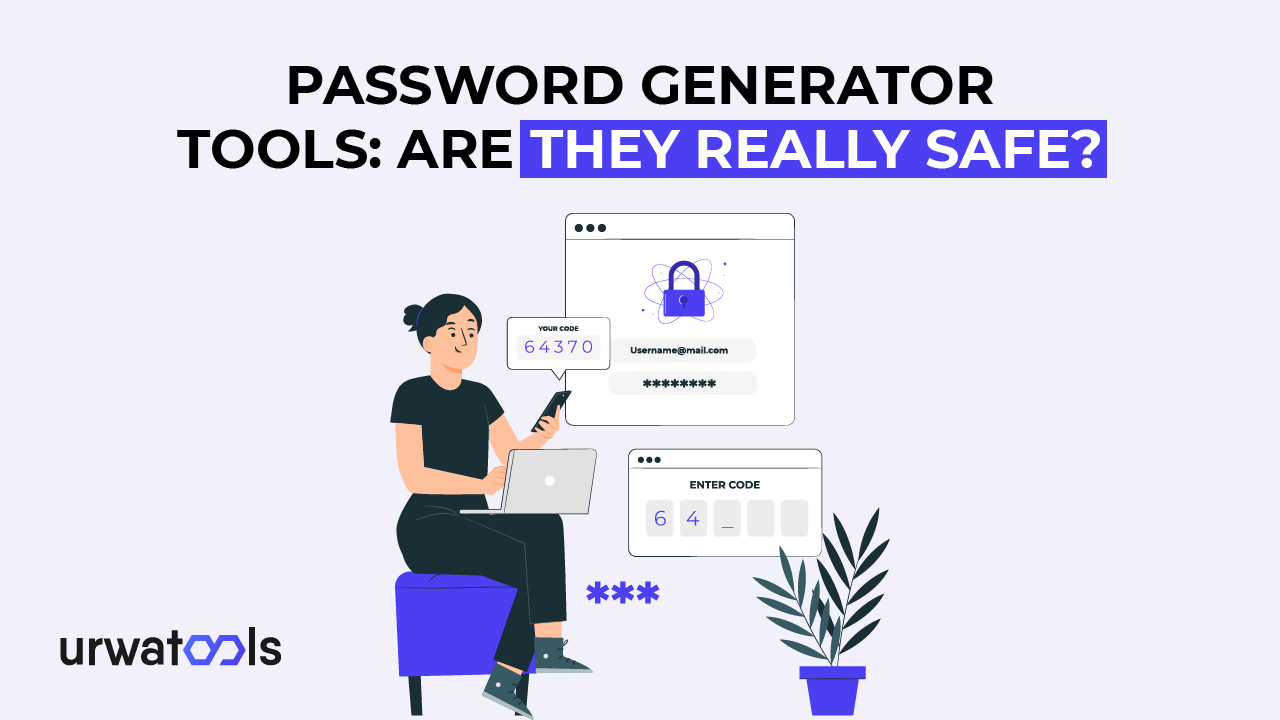Mga Pagkakamali sa SEO na Dapat Iwasan: Mga Karaniwang Pitfalls na Maaaring Makapinsala sa Iyong Mga Ranggo
Ang pag optimize ng search engine (SEO) ay kritikal sa pagtatatag ng pagkakalantad ng iyong website at tagumpay sa pagraranggo. Gayunpaman, maraming mga may ari ng website ang gumagawa ng mga hindi sinasadyang pagkakamali na nakakaapekto sa kanilang mga ranggo at pinipigilan ang mga ito na maabot ang kanilang buong potensyal. Sa post na ito, susuriin namin ang pinaka madalas na mga pagkakamali sa SEO upang maiwasan, pati na rin ang mga praktikal na mungkahi at mga remedyo upang mapahusay ang pagganap ng iyong website.
1. Panimula
Ang Google at iba pang mga search engine ay gumagamit ng mga kumplikadong algorithm upang suriin at ranggo ang mga website depende sa iba't ibang mga katangian. Ang pag unawa at pag iwas sa mga tipikal na blunder ng SEO na ito ay nagsisiguro na ang iyong website ay na optimize para sa pagtaas ng pagkakalantad at pagraranggo.
2. Mga pagkakamali sa pananaliksik sa keyword
Ang pananaliksik sa keyword ay isang hindi maiiwasan na bahagi ng Search Engine Optimization na nagsasangkot ng pagsasaliksik at pagpili ng tamang mga keyword upang i target sa iyong nilalaman ng website. Higit pa sa mga simpleng pagkakamali ay maaaring makasira sa mga pagsisikap sa pananaliksik sa keyword. Narito ang ilang mahahalagang aspeto na dapat tandaan habang nagsasagawa ng pananaliksik sa keyword:
i. Kakulangan ng Pagkakaiba iba ng Keyword: Ang pagtuon lamang sa ilang mga keyword na may mataas na dami ay maaaring maging isang pagkakamali. Ang pagsasama ng isang magkakaibang hanay ng mga kaugnay na keyword sa iyong pananaliksik ay kritikal. Isaalang alang ang mga keyword na may mahabang buntot, na mas mahaba at mas tiyak na mga parirala na may mas mababang dami ng paghahanap ngunit mas mataas na potensyal na conversion.
ii. Hindi Pagpansin sa Intensyon ng Gumagamit: Ang pananaliksik sa keyword ay dapat magsama ng higit pa sa pagtuklas ng mga popular na termino. Ang pag unawa sa layunin sa likod ng mga keyword at pag align ng iyong nilalaman upang masiyahan ang mga hinihingi ng mga naghahanap ay kritikal. Kapag pumipili ng mga keyword, isaalang alang kung ang mga mamimili ay naghahanap ng impormasyon, mga item, o partikular na mga aktibidad.
iii. Hindi Pagpansin sa Competitive Analysis: Ang pagsusuri sa kumpetisyon para sa iyong napiling mga keyword ay kritikal. Suriin ang mga website na ranggo ng mataas para sa iyong mga naka target na keyword at suriin ang kanilang nilalaman, mga backlink, at pangkalahatang awtoridad. Ang pagsusuri na ito ay tumutulong sa iyo na matukoy ang antas ng kahirapan at kumpetisyon na maaari mong makatagpo habang ranggo para sa ilang mga keyword.
iv. Hindi Pagpansin sa Mga Keyword na Mahaba ang Buntot: Kahit na ang mga keyword na may mahabang buntot ay may mas mababang trapiko sa paghahanap, madalas nilang nadagdagan ang mga rate ng conversion. Ang mga keyword na ito ay mas tumpak at sumasalamin sa mas mataas na intensyon ng gumagamit. Upang makakuha ng nakatuon at kwalipikadong mga bisita, isama ang mga keyword na may mahabang buntot sa iyong pag aaral.
v. Keyword Stuffing: Ang keyword stuffing ay ang pagsasanay ng paggamit ng mga keyword sa iyong teksto nang labis at artipisyal. Ang keyword stuffing ay maaaring makaapekto sa iyong mga pagsisikap sa SEO at magbigay ng isang negatibong karanasan sa gumagamit. Sa halip, tumuon sa paggawa ng mataas na kalidad, nagbibigay kaalaman na nilalaman na organikong kasama ang mga Keyword at nagdaragdag ng halaga sa mambabasa.
vi. Hindi Pagpansin sa Mga Trend sa Paghahanap: Ang pananaliksik sa keyword ay dapat isaalang alang ang kasalukuyang mga trend sa paghahanap at mga pagbabago sa pag uugali ng gumagamit. Panatilihin ang balita sa industriya, subaybayan ang mga trend ng keyword, at ayusin ang iyong diskarte sa keyword. Pinapayagan ka ng mga trend sa paghahanap na manatiling kasalukuyan at makuha ang mga umuusbong na pagkakataon sa paghahanap.
vii. Hindi Paggamit ng Mga Tool sa Pananaliksik sa Keyword: Ang mga tool sa pananaliksik ng keyword tulad ng Google Keyword Planner, SEMrush, at Moz Keyword Explorer ay nagbibigay ng kapaki pakinabang na mga pananaw at data upang ma optimize ang iyong diskarte sa keyword. Kailangan mong bigyang pansin ang mga tool na ito upang mahanap ang mga kapaki pakinabang na keyword, tantyahin ang dami ng paghahanap, o alisan ng takip ang mga kaugnay na prospect ng keyword.
viii. Kakulangan ng Lokalisasyon: Kung ang iyong kumpanya ay nagta target ng ilang mga heograpikal na lugar, kabilang ang mga lokal na keyword sa iyong pag aaral ay kritikal. Isaalang alang ang paggamit ng mga keyword at parirala na partikular sa lokasyon sa iyong nilalaman upang ma optimize ito para sa lokal na SEO at maakit ang mga mambabasa sa iyong mga target na lokasyon.
ix. Pagkabigo sa Muling Pagsusuri ng Pagganap ng Keyword: Ang pananaliksik sa keyword ay hindi isang beses na kaganapan. Suriin muli ang tagumpay ng iyong napiling mga keyword nang regular at baguhin kung naaangkop. Subaybayan ang mga ranggo ng keyword, organic na trapiko, at mga rate ng conversion upang alisan ng takip ang mga keyword na nangangailangan ng pag optimize o kapalit.
3. Mga Pagkakamali sa Pag-optimize sa Pahina
Ang pag optimize ng on page ay nagsasangkot ng pag optimize ng iba't ibang mga elemento sa loob ng iyong mga web page upang gawing mas friendly ang mga ito sa search engine. Gayunpaman, ang ilang mga pagkakamali sa pag optimize sa pahina ay maaaring makahadlang sa pagganap ng iyong website.
i. Ang hindi maayos na na optimize na mga tag ng pamagat at meta paglalarawan ay karaniwang mga error. Sa mga resulta ng search engine, ang mga bahaging ito ay nagbibigay ng maikling impormasyon tungkol sa iyong mga web page, at ang pag optimize ng mga ito gamit ang mga kaugnay na keyword ay maaaring makabuluhang maka impluwensya sa iyong mga rate ng pag click through.
ii. Ang isa pang error ay ang pagbalewala sa mga tag ng header tulad ng H1 at H2 tag. Ang mga tag na ito ay nagbibigay ng istraktura ng nilalaman at hierarchy; Ginagamit ito ng mga search engine upang matukoy ang relevancy ng iyong web page. Ang mga tag ng header ay maaaring dagdagan ang kakayahang mabasa ng nilalaman at halaga ng SEO kapag ginamit nang tama.
III. Ang kakulangan ng nilalaman na mayaman sa keyword ay maaaring mabawasan ang kakayahang makita ng iyong website sa mga resulta ng paghahanap. Ang paglikha ng mataas na kalidad, nagbibigay kaalaman, at na optimize na keyword na nilalaman ay kritikal upang maakit ang mga search engine at mga bisita.
4. mga pagkakamali sa teknikal na SEO
Ang teknikal na SEO ay nag optimize ng mga functional na tampok ng iyong website upang madagdagan ang pagkakalantad at pagganap. Ang mga error sa teknikal na SEO ay maaaring makapinsala sa iyong mga resulta.
i. Para sa mga nagsisimula, ang mga oras ng pag load ng pahina ng sluggish ay maaaring magresulta sa isang negatibong karanasan ng gumagamit at nadagdagan ang mga rate ng bounce. Pabor ang mga search engine sa mga mabilis na website; Kaya, ang pag optimize ng bilis ng iyong site ay kritikal.
ii. Ang mga sirang link at 404 error ay maaaring makasira sa reputasyon ng iyong website at karanasan ng gumagamit. Suriin para sa mga sirang link patuloy at palitan ang mga ito kaagad upang magbigay ng mga bisita na may makinis na mga karanasan sa pag browse.
iii. Ang mga hindi na optimize na URL, tulad ng mga may kakaibang character o kulang sa mga deskriptibong keyword, ay maaaring higit pang hadlang sa iyong mga pagsisikap sa SEO. Gumamit ng maikli, mayaman sa keyword na mga URL na tama na kumakatawan sa iyong mga web page.
5. Mahina ang Mga Gawi sa Pagbuo ng Link
Ang pagbuo ng link ay isang mahalagang bahagi ng SEO, ngunit kung tapos na hindi maganda, maaaring makaapekto ito sa iyong mga resulta. Ang mga masamang gawi sa pagbuo ng link ay dapat iwasan.
i. Ang pagbili ng mga link o pagsali sa mga scheme ng link ay maaaring magresulta sa makabuluhang parusa mula sa mga search engine. Tiyaking nakakuha ka ng mataas na kalidad, natural na mga backlink mula sa mga respetado at may kaugnayan na mga domain.
ii. Ang isa pang error na dapat iwasan ay ang sobrang pag optimize ng teksto ng anchor, ang nakikita at na click na teksto ng isang hyperlink. Ang labis o random na paggamit ng parehong teksto ng anchor ay maaaring makabuo ng mga pulang signal para sa mga search engine.
iii. Ang hindi pagpansin sa kalidad ng backlink ay maaari ring makapinsala. Ang mga backlink ng hindi magandang kalidad o spam ay maaaring makapinsala sa reputasyon at ranggo ng iyong website. Tumutok sa pagbuo ng isang iba't ibang at may awtoridad na profile ng backlink.
6. pagpapabaya sa pag optimize ng mobile
Ang pag optimize ng mobile ay naging napakahalaga para sa tagumpay ng SEO sa mga smartphone. Ang pag optimize ng mobile ay maaaring makapinsala sa iyong mga ranggo at karanasan ng gumagamit.
i. Ang kabiguan na magkaroon ng isang mobile friendly na website ay maaaring magresulta sa mataas na mga rate ng bounce at nabawasan ang pakikipag ugnayan sa gumagamit. Tiyakin na ang iyong website ay tumutugon at nag aalok ng isang pare pareho na karanasan sa buong mga aparato at laki ng screen.
ii. Ang isa pang pangunahing isyu ay ang mabagal na bilis ng mobile page. Inaasahan ng mga mamimili ng mobile na mabilis na mag load ang mga pahina, at ginagamit ng mga search engine ang bilis ng pahina bilang isang kadahilanan sa pagraranggo. Pagbutihin ang bilis ng iyong website upang magbigay ng isang walang pinagtahian na karanasan sa pagtingin sa mga mobile device.
iii. Bukod dito, ang isang hindi tumutugon na disenyo, kung saan ang layout at nilalaman ay hindi nababagay sa maraming laki ng screen, ay maaaring makagalit sa mga gumagamit ng mobile. Gumamit ng tumutugon na disenyo upang matiyak na ang iyong website ay lilitaw at gumaganap nang maayos sa lahat ng mga aparato.
7. mga pagkakamali sa nilalaman
Ang nilalaman ay ang pundasyon ng mga kampanya sa SEO. Gayunpaman, ang ilang mga error sa nilalaman ay maaaring maglagay ng panganib sa iyong mga resulta.
i. Ang dobleng materyal, maging sa iyong website o duplikado sa ibang lugar, ay maaaring makapinsala sa iyong mga pagsisikap sa SEO. Ang mga search engine ay tulad ng natatanging at orihinal na materyal, kaya siguraduhin na ang iyong ay natatangi at nagdaragdag ng halaga sa iyong madla.
ii. Bukod dito, ang manipis o mababang kalidad na materyal ay maaaring makaapekto sa iyong mga ranggo. Layunin para sa masusing, mahusay na sinaliksik, malalim na materyal na nakakatugon sa mga kinakailangan at tanong ng iyong target na madla.
III. Ang hindi pag-optimize ng mga larawan at multimedia ay maaaring nag-aaksaya ng pagkakataon. Upang mapalakas ang accessibility at i optimize ang visual na materyal para sa mga search engine, gumamit ng mga deskriptibong filename, alt tag, at caption.
8. hindi pagpansin sa lokal na SEO
Ang hindi pagpansin sa lokal na SEO ay maaaring maging isang magastos na pagkakamali para sa mga negosyo na naglalayong i target ang mga customer sa mga tiyak na lokasyon ng heograpiya. Ang Lokal na SEO ay nag optimize ng iyong website at online na kakayahang makita upang madagdagan ang lokal na kakayahang makita sa paghahanap. Narito ang mga pangunahing punto upang maunawaan ang kahalagahan ng lokal na SEO:
i. Pag target ng mga Lokal na Keyword: Ang Lokal na SEO ay nagsasangkot ng pagpasok ng mga keyword na partikular sa lokasyon sa nilalaman ng iyong website. Pinalakas mo ang iyong mga pagkakataon na magpakita sa mga kaugnay na resulta ng paghahanap sa rehiyon at pagkakaroon ng mga lokal na kliyente sa pamamagitan ng pag optimize ng iyong mga web page para sa mga keyword na ito.
ii. Ang Google My Business (GMB) ay isang libreng produkto ng Google na tumutulong sa mga negosyo na pamahalaan ang kanilang web presence. Kailangan mong samantalahin ang isang napakalaking pagkakataon upang mapabuti ang iyong lokal na pagkakalantad sa paghahanap sa pamamagitan ng hindi pagpansin sa mga Lokal na Pahina ng Negosyo. Lumikha at i optimize ang iyong GMB profile sa pamamagitan ng pagsasama ng tamang NAP (Pangalan, Address, Telepono), oras ng kumpanya, mga larawan, at mga review ng customer.
iii. Mga Lokal na Direktoryo at Pagbanggit: Ang Lokal na SEO ay dapat magkaroon ng pare pareho at tumpak na impormasyon ng NAP sa iba't ibang mga direktoryo at platform ng web. Tiyakin na ang impormasyon ng iyong kumpanya ay napapanahon at pare pareho sa mga platform tulad ng Yelp, ang Yellow Pages, at mga direktoryo na partikular sa industriya. Ang consistency na ito ay tumutulong sa mga search engine sa pag verify ng kredibilidad ng iyong kumpanya at pagtaas ng katanyagan nito sa mga lokal na paghahanap.
iv. Mga Online Review: Ang mga positibong pagsusuri ay kritikal para sa lokal na SEO. Hikayatin ang mga customer na magsumite ng mga review sa mga site tulad ng Google, Yelp, at Facebook. Ang mga review ay nakakaapekto hindi lamang sa mga mamimili sa hinaharap kundi pati na rin ang mga resulta ng search engine. Ang pagtugon sa positibo at negatibong mga pagsusuri ay nagpapakita ng iyong paglahok at pagmamalasakit sa iyong mga mamimili.
v. Mga Lokal na Link Mga Gusali: Ang pagbuo ng mga lokal na link mula sa mapagkakatiwalaang at may kaugnayan na mga website sa iyong rehiyon ay maaaring makatulong nang malaki sa iyong mga pagsisikap sa SEO sa rehiyon. Maghanap ng mga paraan upang makikipagtulungan sa mga lokal na negosyo, dumalo sa mga kaganapan sa komunidad, at pondohan ang mga organisasyon ng komunidad. Ang mga pagsisikap na ito ay nagdaragdag ng iyong lokal na kakayahang makita at reputasyon sa pamamagitan ng pagbuo ng mga backlink.
vi. Mga Pahina ng Lokasyon: Kung ang iyong kumpanya ay may maraming mga lokasyon o serbisyo sa iba't ibang mga lungsod, magtalaga ng mga tiyak na pahina ng lokasyon sa iyong website. Ang bawat pahina ng lokasyon ay dapat magkaroon ng nilalaman nito, tulad ng NAP, oras ng negosyo, mga testimonial, at naisalokal na nilalaman. Ang lokasyon ng mga pahina ay tumutulong sa mga search engine na maunawaan ang kaugnayan ng iyong kumpanya sa ilang mga lugar at pinatataas ang iyong mga pagkakataon na lumitaw sa mga lokal na resulta ng paghahanap.
vii. Pag optimize ng Mobile: Ang mga lokal na paghahanap ay madalas na isinasagawa sa mga mobile device, kaya ang pag optimize ng iyong website para sa mga gumagamit ng smartphone ay mahalaga. Tiyakin na ang iyong website ay mobile friendly, mabilis na naglo load, at nagbibigay ng isang walang pinagtahian na karanasan sa pag browse sa iba't ibang mga mobile device. Ang pag optimize ng mobile ay nagpapabuti sa karanasan ng gumagamit at pinatataas ang mga pagkakataon ng mga lokal na customer na makahanap at makisali sa iyong negosyo.
9. Pagpapabaya sa Karanasan ng Gumagamit
Ang karanasan ng gumagamit (UX) ay napakahalaga para sa pagpapabuti ng pagganap ng SEO; Kailangan mong isaalang alang ito upang matiyak ang mga resulta. Iwasan ang mga sumusunod na UX blunders.
i. Ang kahirapan sa pag navigate sa isang website ay maaaring maiinis ang mga bisita at itaas ang mga rate ng bounce. Tiyakin na ang iyong website ay may isang simple, madaling gamitin na istraktura ng nabigasyon na nagbibigay daan sa mga tao na mabilis na mahanap ang impormasyon na gusto nila.
ii. Ang hindi maayos na disenyo ng mga landing page na may masikip na layout at nakalilitong call-to-action (CTA) button ay maaaring makahadlang sa mga bisita na magsagawa ng nilayon na aksyon. Lumikha ng aesthetically appealing landing page na nagtuturo sa mga tao patungo sa iyong mga layunin.
iii. Ang kakulangan ng malinaw na tawag sa pagkilos ay maaaring mabawasan ang mga conversion. Gumamit ng mga nakahihikayat at naaaksyunan na CTA upang hikayatin ang mga gumagamit na magsagawa ng mga nais na aktibidad, tulad ng pagbili o pag subscribe sa isang newsletter.
10. Tinatanaw ang analytics at pagsubaybay
Ang pag alis ng analytics at pagsubaybay sa labas ng iyong plano sa SEO ay maaaring isang magastos na error na nakakapinsala sa pagganap ng iyong website. Nililimitahan din nito ang iyong mga desisyon na hinihimok ng data. Ang analytics at pagsubaybay ay nagbibigay ng kapaki pakinabang na mga pananaw sa pag andar, pag uugali ng gumagamit, at kahusayan sa SEO ng iyong website. Narito ang ilang mahahalagang kadahilanan na dapat isaalang alang habang nauunawaan ang analytics at pagsubaybay sa kahalagahan:
i. Pagsukat ng Pagganap: Ang mga solusyon sa analytics tulad ng Google Analytics ay nagbibigay daan sa iyo upang subaybayan ang mga tagapagpahiwatig tulad ng organic na trapiko, mga pagbisita sa pahina, mga rate ng bounce, at mga rate ng conversion. Ang mga tagapagpahiwatig na ito ay malinaw na nagpapakita kung paano gumagana ang iyong website at kung gumagana ang iyong mga pamamaraan sa SEO.
ii. Pagtukoy sa mga Trend at Pattern: Ang mga uso at pattern sa pag uugali ng gumagamit ay maaaring makilala sa pamamagitan ng pagsusuri ng data sa paglipas ng panahon. Maaari mong matukoy kung aling mga site o keyword ang lumikha ng pinakamaraming trapiko, kung aling nilalaman ang kumokonekta sa iyong target na madla, at kung aling mga kampanya o pamamaraan ang nagbibigay ng pinakamalaking resulta.
iii. Pagsusuri ng User Behaviour: Ipinapakita ng Analytics kung paano nakikipag ugnayan ang mga tao sa iyong website. Maaari mong suriin kung aling mga pahina ang kanilang binibisita, kung gaano karaming oras ang ginugugol nila sa bawat pahina, at kung paano nila i navigate ang iyong site. Ang data na ito ay tumutulong sa iyo sa pag unawa sa mga kagustuhan ng gumagamit, pag optimize ng graphics at nilalaman ng iyong website, at pagpapabuti ng pangkalahatang karanasan ng gumagamit.
iv. Pagsukat ng ROI: Tumutulong ang Analytics sa pagkalkula ng mga pagsisikap sa SEO 'return on investment (ROI). Maaari mong subaybayan ang tagumpay at kakayahang kumita ng iyong mga kampanya sa pamamagitan ng pagsusuri ng mga conversion at pag uugnay sa mga ito sa partikular na mga pagkilos sa SEO. Pinapayagan ka ng data na ito na mag deploy ng mga mapagkukunan nang mas mahusay at tumuon sa mga diskarte na nagbubunga ng pinakamalaking kinalabasan.
v. Pagtukoy sa mga Isyu at Oportunidad: Ang regular na pagsubaybay sa pagganap ng iyong website ay nagbibigay daan sa iyo upang makita ang mga problema at lugar para sa pag unlad. Halimbawa, kung nakita mo ang biglaang pagbagsak ng organic traffic, maaari mong suriin ang pinagmulan at gumawa ng pagwawasto. Katulad nito, maghanap ng mga potensyal na hindi nagamit, tulad ng mga keyword na may mataas na pagganap o mga popular na paksa ng nilalaman. Maaari mong gamitin ang mga ito upang mapabuti ang iyong mga ranggo at pagkakalantad.
vi. Pagsubok at Pag optimize: Ang Analytics ay naglalatag ng batayan para sa pagsubok at pag optimize. Ang mga eksperimento, tulad ng pagsubok sa A / B, ay maaaring mai set up upang ihambing ang maraming mga variant ng iyong website o nilalaman at magpasya kung alin ang mas mahusay na gumaganap. Sa pamamagitan ng pagsukat ng mga resulta, maaari mong magpasya kung anong mga pagbabago ang gagawin upang mapabuti ang iyong diskarte sa SEO.
11. Mga Pagkakamali sa Pag optimize ng Social Media
Ang papel na ginagampanan ng Social media ay napakahalaga sa pagtaas ng pagkakalantad at trapiko sa iyong website. Sa kabilang banda, ang ilang mga pagkakamali sa pag optimize ng social media ay kailangang baguhin para sa mga pagsisikap sa SEO.
i. Ang hindi palagiang pagba brand sa iba't ibang social network ay maaaring malito ang iyong madla at mapahina ang pagkakakilanlan ng iyong tatak. Panatilihin ang boses, graphics, at messaging ng iyong tatak na pare pareho sa lahat ng mga channel ng social media.
ii. Ang hindi pakikipag usap sa mga tagasunod o tumugon sa mga komento at mensahe ay maaaring makapinsala sa iyong reputasyon at pakikipag ugnayan sa gumagamit. Aktibong lumahok sa mga talakayan, tumugon sa mga katanungan, at bumuo ng tunay na relasyon sa iyong madla.
iii. Ang labis na marketing na walang nilalaman na idinagdag na halaga ay maaaring makainis sa iyong mga tagasunod at mabawasan ang pakikipag ugnayan. Magtuon sa paglikha ng kawili wili at kapaki pakinabang na materyal na resonate sa iyong mga potensyal na customer at hikayatin silang magbahagi at makipag ugnayan sa iyong mga artikulo.
12. Mga Pamamaraan sa SEO ng Black Hat upang Iwasan
Ang mga pamamaraan ng Black hat SEO ay manipulahin ang mga search engine at makakuha ng mas mataas na ranggo. Ang pagsali sa black hat SEO ay maaaring magkaroon ng malubhang kahihinatnan at makapinsala sa kakayahang makita ng iyong website sa mga resulta ng paghahanap.
i. Iwasan ang paggamit ng cloaking at nakatagong teksto kapag ang materyal ay nakatago mula sa mga tao pa nakikita ng mga search engine. Ang mga search engine ay nagpaparusa sa mga website na nakikibahagi sa mga nakaliligaw na kasanayan.
ii. Ang iba pang mga diskarte sa itim na sumbrero ay kinabibilangan ng keyword stuffing at link farming, na nagsasangkot ng labis na paggamit ng mga keyword o pagsali sa mga mapanlinlang na mga scheme ng link. Sa halip, unahin ang mataas na kalidad na nilalaman at natural at may awtoridad na mga backlink.
iii. Maaaring ipataw ang mga parusa para sa mga site ng pag scrape at pag duplicate ng nilalaman, pagkopya ng nilalaman mula sa iba pang mga mapagkukunan, o pagbuo ng ilang mga katulad na website. Lumikha ng natatanging at kalidad na nilalaman na nakikilala ka mula sa iyong mga karibal.
13. Mga Pagkakamali sa SEO sa Mga Website ng E commerce
Ang mga website ng e commerce ay may natatanging mga isyu sa SEO. Iwasan ang mga blunders ng E commerce SEO na nakalista sa ibaba.
i. Ang hindi maayos na na optimize na mga paglalarawan ng produkto ay maaaring makahadlang sa iyong presensya sa search engine. Maaari mong hikayatin ang mga mamimili na bilhin ang iyong mga produkto sa pamamagitan ng pag optimize ng iyong mga paglalarawan ng produkto na may kaugnay na mga keyword, orihinal na impormasyon, at nakakaakit na pagsulat.
ii. Ang hindi kumpleto o nawawalang schema markup, na nag aalok ng nakabalangkas na data sa mga search engine, ay maaaring mabawasan ang kakayahang makita ng iyong website sa mayaman na mga resulta ng paghahanap. Gumamit ng schema markup upang mapabuti ang iyong mga listahan at magbigay ng mga gumagamit ng karagdagang impormasyon.
iii. Ang hindi sapat na pag uuri ng produkto ay maaaring gawing mas madali ang paggamit ng iyong website ng e commerce. Ayusin ang iyong mga item sa naaangkop na mga kategorya at subcategory upang matulungan ang mga mamimili na matuklasan kung ano ang kanilang hinahanap.
14. Pagbawi mula sa Mga Pagkakamali sa SEO
Hindi pa naman katapusan ng mundo kung may mga nagawa ka nang SEO blunders. Ito ay posible upang ibalik at dagdagan ang ranggo ng iyong website. Upang mabawi mula sa mga blunder ng SEO, sundin ang mga hakbang na ito.
i. Magsagawa ng isang kumpletong audit ng SEO upang matukoy ang problema. Suriin ang pagganap ng iyong website, maghanap ng mga teknikal na pagkakamali, at makahanap ng mga pagkakataon para sa pagpapabuti.
ii. Ipatupad ang mga kinakailangang pagwawasto at pagpapahusay batay sa mga natuklasan sa audit. Ang pagpapatupad ay maaaring kasangkot sa pag optimize ng mga tampok sa pahina, pagwawasto ng mga sirang link, pagtaas ng pagganap ng website, o pagpapalakas ng kalidad ng nilalaman.
iii.Subaybayan at suriin ang epekto ng iyong mga pagbabago. Upang masukat ang kahusayan ng iyong mga pagsisikap sa pagbawi ng SEO, subaybayan ang iyong mga ranggo, organic na trapiko, at iba pang mga makabuluhang tagapagpahiwatig.
15. Pangwakas na Salita
Ito ay kritikal upang maiwasan ang mga karaniwang blunders SEO upang mapanatili at mapabuti ang mga ranggo ng iyong website. Maaari mong mapabuti ang pagkakalantad ng iyong website, bumuo ng mas maraming mga organic na bisita, at makakuha ng mas mahusay na mga resulta ng SEO sa pamamagitan ng pagkilala sa mga panganib at paglalapat ng mga pinakamahusay na kasanayan.
Ang SEO ay isang patuloy na proseso, at ang pagiging kasalukuyan sa pinakabagong mga uso at pag update ng algorithm ay kritikal sa pangmatagalang tagumpay. Subaybayan at i optimize ang iyong website nang regular, at baguhin ang iyong diskarte upang tumugma sa mga search engine at mga gumagamit ng pagbabago ng mga hinihingi.







